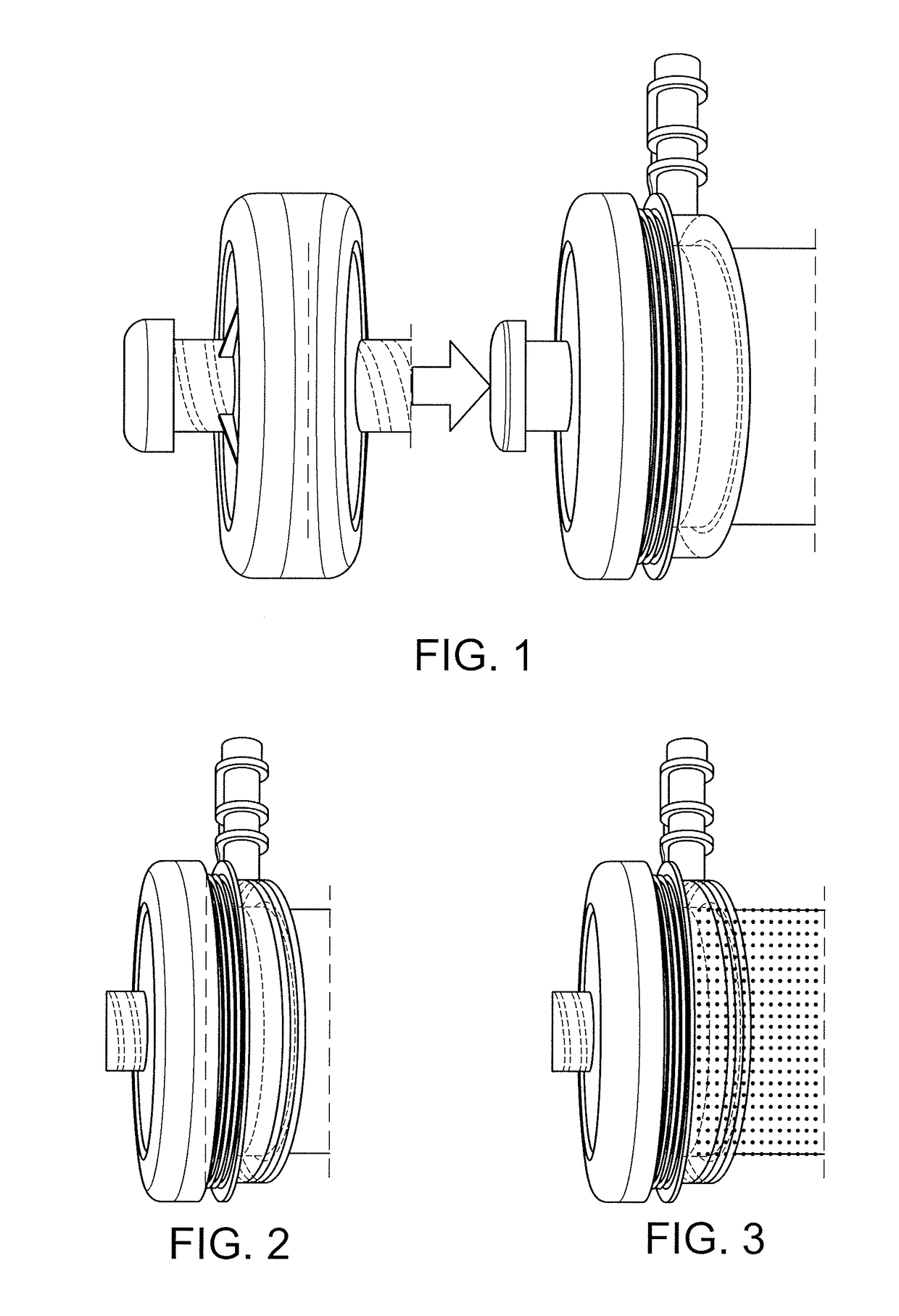Hemocompatible adsorber for the dialysis of protein-bound uremic toxins
a technology of uremic toxins and hemodialysis, which is applied in the field of hemodialysis devices and hemocompatible adsorbers, can solve the problems of inability to use hemodialysis treatments, inability to accept hemodialysis treatments, and inability to achieve hemodialysis treatmen
- Summary
- Abstract
- Description
- Claims
- Application Information
AI Technical Summary
Benefits of technology
Problems solved by technology
Method used
Image
Examples
Embodiment Construction
[0100]Either a small additional blood volume is required for series connection of a separate cartridge to a dialyzer (FIG. 1) or no additional blood volume is required if it is used in the blood caps of the dialyzer (FIG. 2) or on the entire surface of the hollow fiber membrane (FIG. 3). Furthermore, the adsorber does without a diffusion-inhibiting protective layer, as the material itself is suitable for direct blood contact.
[0101]In principle, the innovative adsorber can be used for any dialysis treatment, since toxins <500 g / mol that are difficult to dialyze and place a heavy burden on every patient can be effectively removed. It can be integrated in the desired quantity into a hemodialysis system without affecting the function, i.e. ideally on a non-woven fabric in the blood caps (FIG. 2) without high pressure loss.
[0102]Cyclodextrins are known and accepted in the pharmaceutical industry and are used as “excipients” in the manufacture of drugs (injections, tablets and ointments) ...
PUM
| Property | Measurement | Unit |
|---|---|---|
| Molar mass | aaaaa | aaaaa |
| Mass | aaaaa | aaaaa |
Abstract
Description
Claims
Application Information
 Login to View More
Login to View More - R&D
- Intellectual Property
- Life Sciences
- Materials
- Tech Scout
- Unparalleled Data Quality
- Higher Quality Content
- 60% Fewer Hallucinations
Browse by: Latest US Patents, China's latest patents, Technical Efficacy Thesaurus, Application Domain, Technology Topic, Popular Technical Reports.
© 2025 PatSnap. All rights reserved.Legal|Privacy policy|Modern Slavery Act Transparency Statement|Sitemap|About US| Contact US: help@patsnap.com

